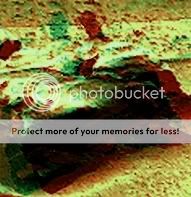It looks like you're using an Ad Blocker.
Please white-list or disable AboveTopSecret.com in your ad-blocking tool.
Thank you.
Some features of ATS will be disabled while you continue to use an ad-blocker.
share:
reply to post by Johnbro
The image is there, I am looking at it now.
Seeing that the post wasn't edited, maybe it was a temporary failure.
The image is there, I am looking at it now.
Seeing that the post wasn't edited, maybe it was a temporary failure.
its just like the skull of this dino or fish that was found on Mars (you can see eye sockets, jaw joint with teeth etc...) some folks see it and some
don't ...its in the eye of the beholder no matter how good or bad it looks to each person looking ... see skull for example
www.abovetopsecret.com...
I don't know till I go.
I don't know till I go.
I am very familiar with that information, Ruff. Very good.
MESSAGE FOR : ArmaP -
I knew I had seen your name somewhere. Do you recognize this??
ArmaP UFO pic
Sure you must recognize this then???
Solar Obliteration technique
Small world. I have had that image in my files for a couple of years.
Look at 'Solar Obliteration' images from other cities' section of that second page.
MESSAGE FOR : ArmaP -
I knew I had seen your name somewhere. Do you recognize this??
ArmaP UFO pic
Sure you must recognize this then???
Solar Obliteration technique
Small world. I have had that image in my files for a couple of years.
Look at 'Solar Obliteration' images from other cities' section of that second page.
cool ufos johnm. Idid saw that got new picturs on your websight but no expanation. where is the update.
Thankyou, H.
We're still working on the 'Mars-Gate' pages. Adding new files, nearly everyday. On the latest, 'AK' fairly 'spelled out' the process of how he can derive such detail from images - that apparently, some talented image pros cannot seem to duplicate. So, I am hoping that some will follow his instructions... and be able to greater add to the mounting evidence.
I just don't know - but if this is all 'such non-sense' - why is there the level of consistantcy of the 'resemblances' in these images?? Why is it 'faces' and resembling 'buildings' - and not something different? Why isn't it 'sea turtles' or 'army tanks'? Just intriguing - yet, brings up far more questions that answers.
Will continue to look - until we decide - for ourselves, that it is no longer worth the effort. Until then, lets simply agree to disagree.
jb
..
We're still working on the 'Mars-Gate' pages. Adding new files, nearly everyday. On the latest, 'AK' fairly 'spelled out' the process of how he can derive such detail from images - that apparently, some talented image pros cannot seem to duplicate. So, I am hoping that some will follow his instructions... and be able to greater add to the mounting evidence.
I just don't know - but if this is all 'such non-sense' - why is there the level of consistantcy of the 'resemblances' in these images?? Why is it 'faces' and resembling 'buildings' - and not something different? Why isn't it 'sea turtles' or 'army tanks'? Just intriguing - yet, brings up far more questions that answers.
Will continue to look - until we decide - for ourselves, that it is no longer worth the effort. Until then, lets simply agree to disagree.
jb
..
The face on Mars has been repeatedly proven to be a trick of light and shadow, just as I believe this anomaly to be.
There are even many instances of human looking natural rock formations here on Earth. In Connecticut, there is a series of low mountains called Sleeping Giant, because it looks similar to a huge humanoid figure laying down.
In the Southwestern US, there are human looking rock formations all over the landscape - you have to but turn around to find one.
I fully believe that this is a trick of light and shadow, combined with the tendency of the human brain to recognize humanoid faces where none exist - simple pattern recognition.
There are even many instances of human looking natural rock formations here on Earth. In Connecticut, there is a series of low mountains called Sleeping Giant, because it looks similar to a huge humanoid figure laying down.
In the Southwestern US, there are human looking rock formations all over the landscape - you have to but turn around to find one.
I fully believe that this is a trick of light and shadow, combined with the tendency of the human brain to recognize humanoid faces where none exist - simple pattern recognition.
reply to post by obsidian468
Then can you please explain the different colors of rocks that are seen in the images? One dark rock in a huge pile of all light colored rocks, this is not normal for an untouched world.
Star
Then can you please explain the different colors of rocks that are seen in the images? One dark rock in a huge pile of all light colored rocks, this is not normal for an untouched world.
Star
reply to post by Stari
On the contrary, I find more natural on a world without rain, the strongest erosion agent on Earth.
Most people that make comments about the rocks and sand and ground, etc. never looked to those things before in other situations, so they are really seeing this type of thing for the first time. If they had looked around them throughout their lives they would have noticed many similar things here on Earth.
Rocks are created and are changed in many different ways, they are not made in "rock factory" that creates rocks of "type A" or in a different factory for "type B" rocks. In the same way, rocks are not distributed according to colour, size (although there is a natural way of distributing by size) or shape more in some places than in other places.
Rocks that are for long periods with one or more faces getting Sun light may created a cover of a different colour, like if they were painted. When one of those rocks breaks (because of a change in temperature, for example), the original colour may be the only one visible, and the rock will look like a completely different rock and will look different from the other rocks around it because they are still showing the "painted" surface.
In conclusion, I don't think that those rocks have anything unnatural, there is no need for any other thing than common natural processes to reach those shapes, sizes and colours.
PS: sorry for answering a post that was not meant for me.
On the contrary, I find more natural on a world without rain, the strongest erosion agent on Earth.
Most people that make comments about the rocks and sand and ground, etc. never looked to those things before in other situations, so they are really seeing this type of thing for the first time. If they had looked around them throughout their lives they would have noticed many similar things here on Earth.
Rocks are created and are changed in many different ways, they are not made in "rock factory" that creates rocks of "type A" or in a different factory for "type B" rocks. In the same way, rocks are not distributed according to colour, size (although there is a natural way of distributing by size) or shape more in some places than in other places.
Rocks that are for long periods with one or more faces getting Sun light may created a cover of a different colour, like if they were painted. When one of those rocks breaks (because of a change in temperature, for example), the original colour may be the only one visible, and the rock will look like a completely different rock and will look different from the other rocks around it because they are still showing the "painted" surface.
In conclusion, I don't think that those rocks have anything unnatural, there is no need for any other thing than common natural processes to reach those shapes, sizes and colours.
PS: sorry for answering a post that was not meant for me.
reply to post by ArMaP
Don't be sorry Armap, this is a public forum and all opinions are welcome here i'm sure!
So what you are saying is that some form of weathering could account for the one rock in this image to look dark and all of the other rocks in the same image are light? What kind of weathering could cause this image to take on the effect you are speaking of?
I would like to google this geological information and study it.
Don't be sorry Armap, this is a public forum and all opinions are welcome here i'm sure!
So what you are saying is that some form of weathering could account for the one rock in this image to look dark and all of the other rocks in the same image are light? What kind of weathering could cause this image to take on the effect you are speaking of?
I would like to google this geological information and study it.
Here is an image for example, what would you say caused the bluish gray rocks to form in this one? It is in the middle of nothing.
What are the bluish gray looking rocks?
Thanks
Star
[edit on 2/9/2008 by Stari]
What are the bluish gray looking rocks?
Thanks
Star
[edit on 2/9/2008 by Stari]
If 'repeatedly proven' means several people that are conventional science-biased guestimated their educated opinion - then I agree to disagree. I
do agree that 'it' could be just about anything. I am not personally subscribing to the assertion that it is a tiny little alien. But 'light'
filters applied to that image file showed a couple of people more detail than was bargained for. It was a multi-phased process - that the author
finally gave more detail on. We personally think that the 'figure' image was a social test.
Folks ... really. Believe whatever you wish. We are only making these examples available for those that are interested. I just am adding this comment - because many posting here obviously did not see the hyperlink - and are simply repeating what their 'favorite expert' told them.
,,
Folks ... really. Believe whatever you wish. We are only making these examples available for those that are interested. I just am adding this comment - because many posting here obviously did not see the hyperlink - and are simply repeating what their 'favorite expert' told them.
,,
reply to post by Johnbro
Well, anyone with an eye can tell this object in the OP is in the shape of a person. It was a great find from you and your friend.
This image along with the building library of anomalous images that I and many others have tells a story of Mars that is much different than what NASA is telling us. And where are we getting these images? hmmm
I'm sure mikesingh can even vouch for that. I have been following him on this board for a while now and he is relentless in presenting anomalous images from Mars.
Star
Well, anyone with an eye can tell this object in the OP is in the shape of a person. It was a great find from you and your friend.
This image along with the building library of anomalous images that I and many others have tells a story of Mars that is much different than what NASA is telling us. And where are we getting these images? hmmm
I'm sure mikesingh can even vouch for that. I have been following him on this board for a while now and he is relentless in presenting anomalous images from Mars.
Star
reply to post by Stari
I am not sure what the blue-gray rocks are. I would suppose that they have some level of hematite in them, as that is the best maker of blue rocks that i am aware of (and very plentiful, judging by all the blueberries).
The picture you posted is one of my favorites. What was that? How did it happen? It literally looks like God came by with a giant hammer and smashed a very large boulder, and then just walked off, leaving a rubble pile behind.
That is a VERY interesting photo to me.
I am not sure what the blue-gray rocks are. I would suppose that they have some level of hematite in them, as that is the best maker of blue rocks that i am aware of (and very plentiful, judging by all the blueberries).
The picture you posted is one of my favorites. What was that? How did it happen? It literally looks like God came by with a giant hammer and smashed a very large boulder, and then just walked off, leaving a rubble pile behind.
That is a VERY interesting photo to me.
reply to post by captainsmokie
I saw that one a few weeks ago(the tiny head peering from the skull fossil).I made it brighter and found his "friend" next to him. This is nothing compared to the HUGE HUMANOID face straing at the SUNDIAL.In fact this panorama will forever be called the SUNDIAL face because look in the rock just in front of the sundial and unmask it.It's humanoid.But I digress.




 [IMG]http://i8.photobucket.com/albums/a45/JLehane/MarscropPiper6aSpies.jpg[/
IMG]
[IMG]http://i8.photobucket.com/albums/a45/JLehane/MarscropPiper6aSpies.jpg[/
IMG] 


 I think I hear them saying to the rover that "Don't look,we're just
rocks!"
I think I hear them saying to the rover that "Don't look,we're just
rocks!" 

I saw that one a few weeks ago(the tiny head peering from the skull fossil).I made it brighter and found his "friend" next to him. This is nothing compared to the HUGE HUMANOID face straing at the SUNDIAL.In fact this panorama will forever be called the SUNDIAL face because look in the rock just in front of the sundial and unmask it.It's humanoid.But I digress.












reply to post by Stari
I don't know the name, but I remember that someone (I think it was Zorgon, but I am not sure. Edit: it was spacedoubt) called it "desert varnish".
(The external links on the above Wikipedia article are related to Mars)
What I think happens is that the exposed areas (like the "figure"), being a better target for the wind blown sand, do not get that "varnish". Also, you can see that those darker stones are on the border of the stone "slabs", so they are probably more recently exposed.
That photo shows what I think may be the remains of what made that small crater, the bluish-grey stones.
(As there are images from the L4, L5 and L6 filters, I made my version of a colour image of that small crater)

The white stones I think are what lies beneath the sand on that place. You can see that in the distance, on the crater rim, that white rocks appear near the surface. I think that this rock is the result of the accretion of the ground materials during a previous era. Now covered with sand, rocks and "blueberries", those whitish rocks only appear on crater rims (because the crater was created when the rock was already there, if that is the case then older craters should not have this rock visible on their rims) and other places where the surface was broken for some reason.
In this case I think that a small meteor hit with enough energy to break that white rock, making a small crater, and some of the original meteor material still lies there, as sometimes happens here on Earth.
[edit on 10/2/2008 by ArMaP]
I don't know the name, but I remember that someone (I think it was Zorgon, but I am not sure. Edit: it was spacedoubt) called it "desert varnish".
(The external links on the above Wikipedia article are related to Mars)
What I think happens is that the exposed areas (like the "figure"), being a better target for the wind blown sand, do not get that "varnish". Also, you can see that those darker stones are on the border of the stone "slabs", so they are probably more recently exposed.
That photo shows what I think may be the remains of what made that small crater, the bluish-grey stones.
(As there are images from the L4, L5 and L6 filters, I made my version of a colour image of that small crater)

The white stones I think are what lies beneath the sand on that place. You can see that in the distance, on the crater rim, that white rocks appear near the surface. I think that this rock is the result of the accretion of the ground materials during a previous era. Now covered with sand, rocks and "blueberries", those whitish rocks only appear on crater rims (because the crater was created when the rock was already there, if that is the case then older craters should not have this rock visible on their rims) and other places where the surface was broken for some reason.
In this case I think that a small meteor hit with enough energy to break that white rock, making a small crater, and some of the original meteor material still lies there, as sometimes happens here on Earth.
[edit on 10/2/2008 by ArMaP]
While I was looking for more images of the "figure" I found one interesting (to me) thing that NASA did not thought interesting enough to send the
rover there to see it better (or if they did they did not show it).
It was two rocks leaning against each other, visible in four images.
From Sol 1362, front HazCam:
Left camera
Right camera
Rear HazCam:
Left camera
RIght camera
It was two rocks leaning against each other, visible in four images.
From Sol 1362, front HazCam:
Left camera
Right camera
Rear HazCam:
Left camera
RIght camera
armap,
the first pic (left camera) I put in my pictures and looked at it, theres something in sky-the tilted rock looks strange!!
will go look at it some more.
the first pic (left camera) I put in my pictures and looked at it, theres something in sky-the tilted rock looks strange!!
will go look at it some more.
also noticed (left camers picture) that if you look right under the object thats in the sky, and judt to the right on top of the closest hill, there
is a platform with a round thing on it (sort of looks like a observatory when I enlarged the pic. Weird
It was two rocks leaning against each other, visible in four images.
If some one can blow up those four images (just of the leaning rock pics, concentrating on just the leanig rock) if you look at all of them (to me) it almost looks like a head is pushing a trap door open, kinda like a horse type head , or dare I say dragon, going back and forth looking at those four pics they even look like "whatever" is holding up the big block..changes...as if pushing it open in each frame
could just be me..but very cool find is bottom line!!
new topics
-
Oh, Good Gosh. “Kremlin Warns Stay Away from Greenland.”
World War Three: 1 hours ago -
Archbisop Vigano Warns of Deep State and Deep Church
New World Order: 1 hours ago -
A Flash of Beauty: Bigfoot Revealed ( documentary )
Cryptozoology: 7 hours ago -
Fire insurance in LA withdrawn months ago
General Conspiracies: 9 hours ago
top topics
-
Fire insurance in LA withdrawn months ago
General Conspiracies: 9 hours ago, 8 flags -
A Flash of Beauty: Bigfoot Revealed ( documentary )
Cryptozoology: 7 hours ago, 6 flags -
Bizarre Labour Party Tic Toc Video Becomes Even More Embarrassing
Regional Politics: 17 hours ago, 4 flags -
Oh, Good Gosh. “Kremlin Warns Stay Away from Greenland.”
World War Three: 1 hours ago, 4 flags -
Archbisop Vigano Warns of Deep State and Deep Church
New World Order: 1 hours ago, 3 flags
active topics
-
Fire insurance in LA withdrawn months ago
General Conspiracies • 26 • : sapien1982 -
Trump says ownership of Greenland 'is an absolute necessity'
Other Current Events • 92 • : Lazy88 -
Oh, Good Gosh. “Kremlin Warns Stay Away from Greenland.”
World War Three • 7 • : DAVID64 -
The Truth about Migrant Crime in Britain.
Social Issues and Civil Unrest • 45 • : covent -
Judge rules president-elect Donald Trump must be sentenced in 'hush money' trial
US Political Madness • 87 • : tkwaz -
Los Angeles brush fires latest: 2 blazes threaten structures, prompt evacuations
Mainstream News • 299 • : StoutBroux -
A Flash of Beauty: Bigfoot Revealed ( documentary )
Cryptozoology • 4 • : CosmicFocus -
Archbisop Vigano Warns of Deep State and Deep Church
New World Order • 0 • : FlyersFan -
Planned Civil War In Britain May Be Triggered Soon
Social Issues and Civil Unrest • 33 • : sapien1982 -
Steering the Titantic from the Drydock.
Rant • 47 • : andy06shake
